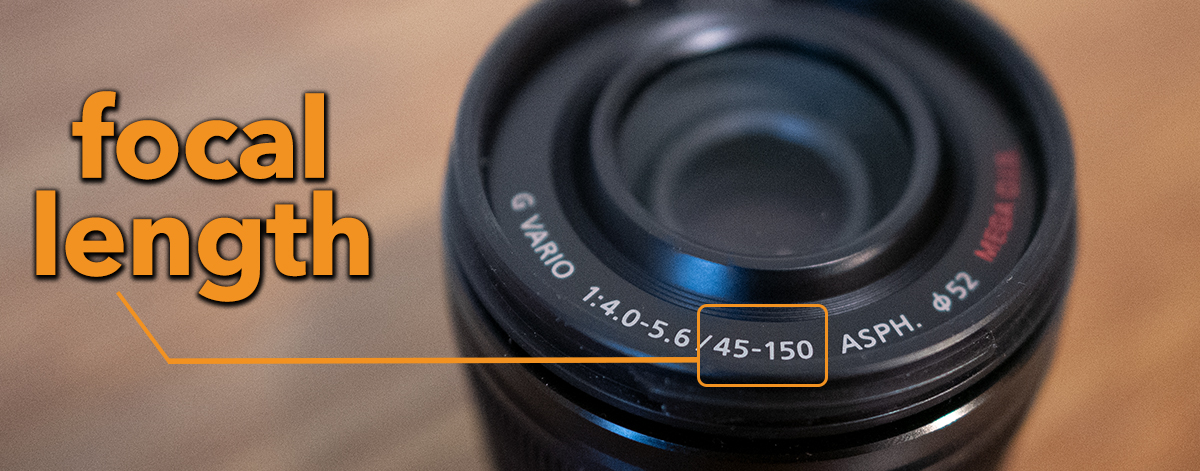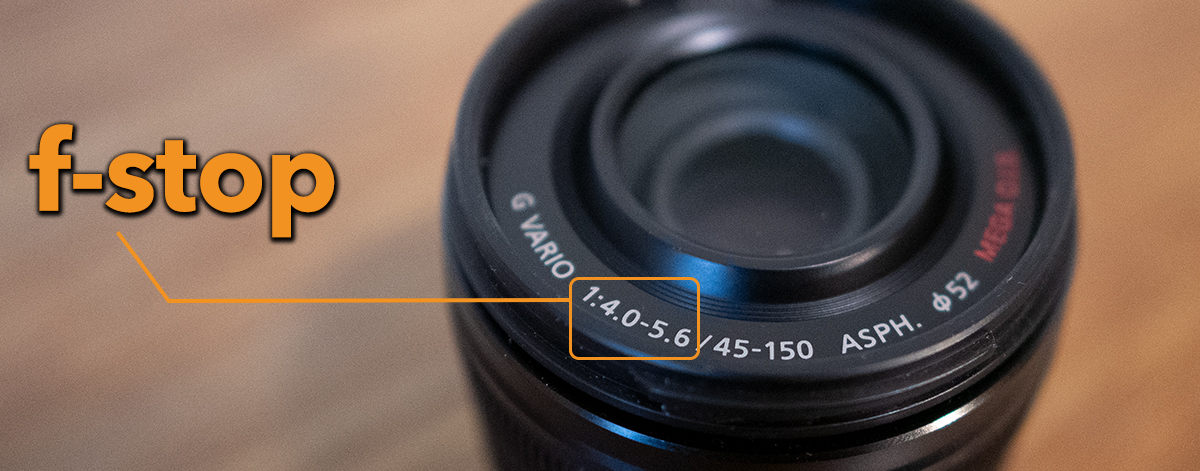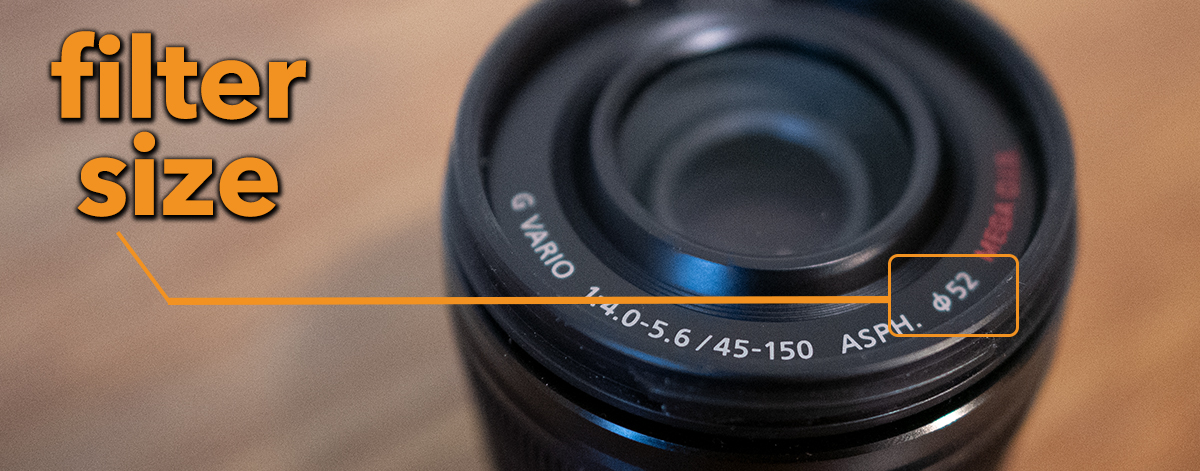Understanding Camera Lens Characteristics
Gear
General Topics
Photography
Tips & Advice
Tutorials
Gear Focus
Apr 14, 2020

To a new photographer, the letters and numbers that are displayed on a lens can probably be a bit daunting. That's why we wanted to write up this quick guide on what these numbers mean and other camera lens characteristics.
 What you intend to shoot will determine what type you need If you are a landscape photographer, you will most likely want a wide angle lens. Therefore you should invest in lenses with low mm measurements. If you are a nature photographer, you'll likely want a high mm lens that is capable of zooming in tight to the animal or subject you want to shoot.
What you intend to shoot will determine what type you need If you are a landscape photographer, you will most likely want a wide angle lens. Therefore you should invest in lenses with low mm measurements. If you are a nature photographer, you'll likely want a high mm lens that is capable of zooming in tight to the animal or subject you want to shoot.
 The aperture controls the depth of field (DOF). This means that the more light you let into the sensor, the shallower the DOF. For many photographers, being able to capture images with a razor-thin DOF is ideal as it creates a nice blurry background and adds contrast to the in-focus subject. Lenses with a wider maximum aperture tend to cost more than their lower-aperture counterparts. These lenses are typically more versatile as they can shoot in low-light situations.
The aperture controls the depth of field (DOF). This means that the more light you let into the sensor, the shallower the DOF. For many photographers, being able to capture images with a razor-thin DOF is ideal as it creates a nice blurry background and adds contrast to the in-focus subject. Lenses with a wider maximum aperture tend to cost more than their lower-aperture counterparts. These lenses are typically more versatile as they can shoot in low-light situations.
 One of the last funny looking numbers on most lenses is the filter ring size. This is represented with a symbol that looks like a zero with a slash through it: ø. The thread size determines what size filters you'll need to be able to attach your filters to your lens. Simply find the measurement on your lens and you will know exactly what size filters you need to purchase.
One of the last funny looking numbers on most lenses is the filter ring size. This is represented with a symbol that looks like a zero with a slash through it: ø. The thread size determines what size filters you'll need to be able to attach your filters to your lens. Simply find the measurement on your lens and you will know exactly what size filters you need to purchase.
Camera Lens Characteristics
So what do these letters and numbers mean? I see f-stops and things measured in millimeters. This is a common question for many beginner photographers. So we've put together this handy guide that will help you understand the different camera lens characteristics for your different lenses.Number 1: MM (Focal Length)
Let's start with one of the easier camera lens characteristics. The focal length. The focal length is the measurement between where the light hits your lens and the sensor. This measurement is expressed by a number, which tells you how much of the scene your sensor will capture. So smaller numbers will have a wider angle and therefore capture more of your scene. Higher numbers will have a narrower angle and therefore capture less of the scene. What you intend to shoot will determine what type you need If you are a landscape photographer, you will most likely want a wide angle lens. Therefore you should invest in lenses with low mm measurements. If you are a nature photographer, you'll likely want a high mm lens that is capable of zooming in tight to the animal or subject you want to shoot.
What you intend to shoot will determine what type you need If you are a landscape photographer, you will most likely want a wide angle lens. Therefore you should invest in lenses with low mm measurements. If you are a nature photographer, you'll likely want a high mm lens that is capable of zooming in tight to the animal or subject you want to shoot.
Camera Lens Characteristic Number 2: F-Stop
This is the aperture of your camera. This is expressed as an f-stop on your camera - usually written as f/1.4 for example. The f-stop can be a bit confusing because the smaller the f-stop, the more light that is let in. Photography is ALL about the light, so this camera lens characteristic is very important. The aperture controls the depth of field (DOF). This means that the more light you let into the sensor, the shallower the DOF. For many photographers, being able to capture images with a razor-thin DOF is ideal as it creates a nice blurry background and adds contrast to the in-focus subject. Lenses with a wider maximum aperture tend to cost more than their lower-aperture counterparts. These lenses are typically more versatile as they can shoot in low-light situations.
The aperture controls the depth of field (DOF). This means that the more light you let into the sensor, the shallower the DOF. For many photographers, being able to capture images with a razor-thin DOF is ideal as it creates a nice blurry background and adds contrast to the in-focus subject. Lenses with a wider maximum aperture tend to cost more than their lower-aperture counterparts. These lenses are typically more versatile as they can shoot in low-light situations.
Filter Ring Size
 One of the last funny looking numbers on most lenses is the filter ring size. This is represented with a symbol that looks like a zero with a slash through it: ø. The thread size determines what size filters you'll need to be able to attach your filters to your lens. Simply find the measurement on your lens and you will know exactly what size filters you need to purchase.
One of the last funny looking numbers on most lenses is the filter ring size. This is represented with a symbol that looks like a zero with a slash through it: ø. The thread size determines what size filters you'll need to be able to attach your filters to your lens. Simply find the measurement on your lens and you will know exactly what size filters you need to purchase.
Types of Lenses
There are a number of different types of lenses, so we will just go over the most common/basic lenses. Since this blog is just on camera lens basics, we won't get into the more advanced lens types, but you can always ask any questions you have below, or contact us and we will be happy to help.Prime Lenses
Prime lenses are lenses with a fixed focal length. These lenses have no zoom ring, so the focal length always stays the same. These can be good or bad depending on your needs. They force you to get creative when shooting. If you need to re-frame a shot, you have to physically move the camera. The benefit of a prime lens is that they usually have a wider aperture which leads to a greater DOF.Zoom Lenses
A zoom lens on the other hand has an adjustable focal length. This means you can adjust the framing of your shot by adjusting the zoom ring. This is great because it adds a great deal of versatility to your lens. It is like having multiple lenses right in one! The downside of a zoom lens is that they tend to have narrower apertures so the DOF is lessened and they won't perform as well in low-light situations.Camera Lens Characteristics That Matter to You
At the end of the day, the lens you need depends on a huge number of factors, most importantly what you want to shoot. It is important to determine what you want or need to shoot before diving into a new lens. Once you know what you're shooting, then you can start to figure out which of these camera lens characteristics you need to get the most from your camera. Join Gear Focus today for great deals on new and used camera lenses and everything else gear-related. And when you're ready to buy used camera lenses you know where to start!Own one like this?
Make room for new gear in minutes.
Loading...
